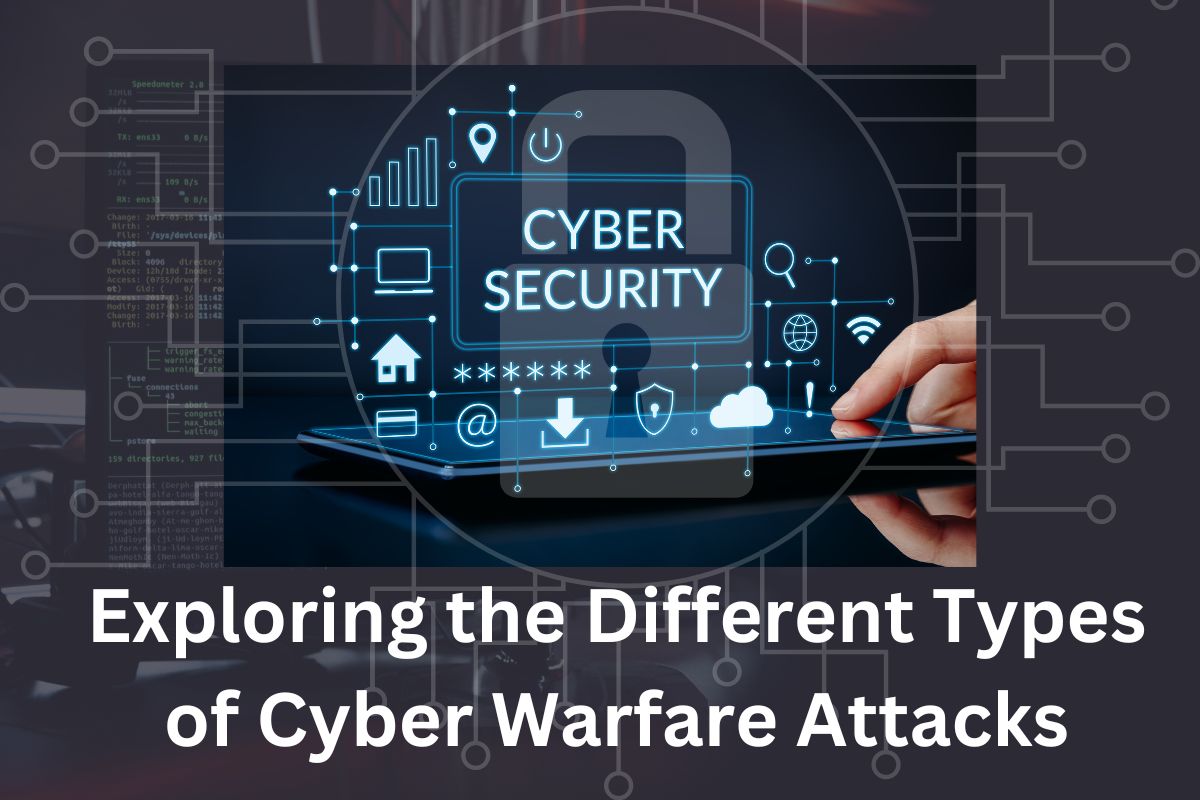
Exploring The Different Types Of Cyber Warfare Attacks
Cyber warfare is typically described as a cyberattack or series of cyber strikes targeted at a certain nation. It has the capacity to devastate government and civilian infrastructure and disrupt essential systems, resulting in state harm and perhaps death.
However, there is a dispute among cyber security professionals over what constitutes cyber warfare. The US Department of Defense (DoD) recognizes the threat to national security presented by malicious Internet use but does not define cyber warfare clearly. Certain individuals refer to computer attacks that could result in death as cyber warfare.
In most circumstances, cyber warfare involves a nation-state carrying out cyber assaults on another, but in certain cases, the attacks are carried out by terrorist organizations or non-state actors attempting to further the goals of a hostile nation. Although there have been numerous reported cases of cyber warfare in the recent past, there is no definitive, all-encompassing definition of what constitutes an act of war.
7 Types of Cyber Warfare Attacks
Here are some examples of common cyber warfare attacks
- Espionage
It Refers to spying on other countries in order to steal secrets. This can include deploying botnets or spear phishing attempts to attack vulnerable computer systems before stealing sensitive information in cyber warfare.
- Sabotage
Government agencies must identify sensitive information and the dangers associated with its compromise. Terrorists or hostile countries may steal or destroy information, or they may use internal threats such as disgruntled or irresponsible personnel, or government employees with ties to the attacking country.
- Denial-of-service (DoS) Attacks
DoS attacks prohibit real users from accessing an internet site by flooding it with false demands and forcing the website to deal with them. This form of attack can be used to disrupt key operations and systems, as well as to prevent civilians, military and security professionals, or research organizations from accessing sensitive websites.
- Electrical Power Grid
Attackers have the capacity to destroy crucial systems, disrupt infrastructure, and even cause physical harm by targeting the energy grid. Power grid attacks can potentially impair communications, rendering services such as text messages and conversations inoperable.
- Propaganda Attacks
Attempts to exert influence over the minds and thoughts of people who live in or battle for a specific country. Propaganda can be used to disclose uncomfortable truths, propagate lies in order to cause people to lose faith in their government, or align with their enemy.
- Economic Disruption
The majority of contemporary economic systems use computers. Attackers may choose to target the computer networks of financial organizations including banks, stock exchanges, and payment systems, in an effort to steal money or keep people from getting the money they need.
- Surprise Attacks
These are the cyber equivalents of Pearl Harbor and 9/11. The goal is to launch a large onslaught that the enemy does not expect, allowing the attacker to damage their defenses. This could be done in the framework of hybrid warfare to prepare the ground for a physical assault.
How to Combat Cyber Warfare
The legal framework of this new subject is still unknown because there is no international legislation controlling the use of cyber weapons. This is not to say that cyber warfare isn’t covered by the law.
The Tallinn Manual, a textbook that addresses rare but major cyber dangers, has been issued by the Cooperative Cyber Defense Center of Excellence (CCDCoE). This guidebook describes when cyber attacks violate international law and how countries should respond.
Cyber war games can help states, cities, or nations enhance readiness for cyber warfare by:
- Testing different situations:- Such as detecting assaults in their early stages or managing hazards when key infrastructure has already been hacked.
- Testing unusual scenarios:- Attacks are rarely carried out “by the book.” The defenders can learn how to eliminate genuine dangers by forming a red team that acts as attackers and attempts to identify novel ways to infiltrate a target system.
- Division of labor and cooperation mechanisms:- Collaboration among many individuals from multiple businesses and governmental organizations is necessary for cyber warfare. A cyber war game can bring people who may not know each other together and help them decide how to collaborate in the event of a disaster.
- Improving policies: Governments can develop cyber warfare policies, but they must be tested in practice. A cyber war game can test policies and give the chance to make improvements to them.
The Importance of Layered Defense
Many governments have released operational national security strategies to safeguard their digital infrastructure in response to the threat of cyber warfare. These policies frequently employ a tiered defense strategy, which entails:
- Raising awareness for cybersecurity
- Securing the Cyber ecosystem
- promoting open standards to tackle cyber risks
- Implementing a national framework for cybersecurity assurance
- Enhancing private companies’ cybersecurity capabilities by working with them
Securing the Private Sector
The ability of local businesses to withstand cyberattacks is a strategic consideration in cyber warfare. To limit the advantages of an attack on a nation-state, businesses must enhance their security protocols. To maintain corporate cybersecurity, which can advance national security, the following steps should be taken:
- Create obstacles to breaching the network
- To swiftly identify, look into, and stop harmful traffic, use web application firewalls (WAF).
- Restore business activities as soon as possible after a breach took place.
- facilitating public-private sector collaboration
- Protect yourself from international cyber threats by using local hackers as a resource.

